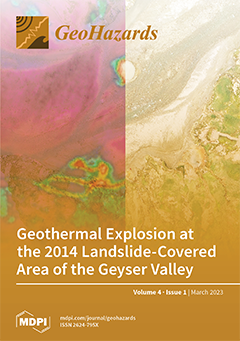Greece, like the rest of the Mediterranean countries, faces wildland fires every year. Besides their short-term socioeconomic impacts, ecological destruction, and loss of human lives, forest fires also increase the burnt areas’ risk of flash flood phenomena, as the vegetation, which acted in
[...] Read more.
Greece, like the rest of the Mediterranean countries, faces wildland fires every year. Besides their short-term socioeconomic impacts, ecological destruction, and loss of human lives, forest fires also increase the burnt areas’ risk of flash flood phenomena, as the vegetation, which acted in a protective way against runoff and soil erosion, is massively removed. Among the most severe wildland fire events in Greece were those of summer 2021, which were synchronous to the very severe heat waves that hit the broader area of the Balkan Peninsula. More than 3600 km
2 of land was burnt and a significant amount of natural vegetation removed. Three of the burnt areas are examined in this work, namely, Attica, Northern Euboea, and the Peloponnese, in order to assess their risk of future flash flood events. The burnt areas were mapped, and their geological and geomorphological features studied. Flash flood hazard assessment was accomplished through a Boolean logic-based model applied through Geographic Information Systems (GIS) software, which allowed the prioritization of the requirement for protection by identifying which locations were most prone to flooding. The largest part of our study areas is characterized by geomorphological and geological conditions that facilitate flash flood events. According to our findings, in almost all study areas, the regions downstream of the burnt areas present high to very high flash flood hazard, due to their geomorphological and geological features (slope, drainage density, and hydrolithology). The only areas that were found to be less prone to flood events were Vilia and Varimpompi (Attica), due to their gentler slope inclinations and overall geomorphological characteristics. It is known that vegetation cover acts protectively against flash floods. However, in this case, large areas were severely burnt and vegetation is absent, resulting in the appearance of flash floods. Moreover, imminent flooding events are expected to be even more intense in the areas downstream of the burnt regions, possibly bearing even worse impacts on the local population, infrastructure, etc.
Full article





